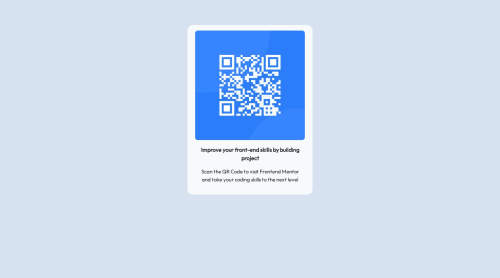Submitted over 2 years agoA solution to the QR code component challenge
Responsive QR Scan with Bootstrap
bootstrap
@Toheeb-dev

Solution retrospective
I find nothing difficult in this simple challenge and the area I am unsure of is the tablet view of the website which is also not part of the challenge. I have not qquestion
Code
Loading...
Please log in to post a comment
Log in with GitHubCommunity feedback
No feedback yet. Be the first to give feedback on Toheeb-dev's solution.
Join our Discord community
Join thousands of Frontend Mentor community members taking the challenges, sharing resources, helping each other, and chatting about all things front-end!
Join our Discord